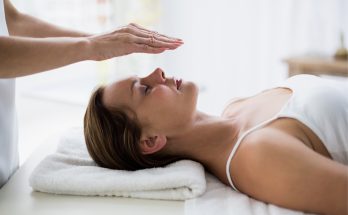You would be unusual if you weren’t in need of a little stress relief right now. The good news is, that may require nothing more than your lungs to achieve.
The importance of deep, diaphragmatic breathing has been taught for centuries. According to yoga scholars, the first texts describing controlled breathing, called pranayama, appeared as early as 700 BC. The word Pranayama can be interpreted, depending on the way the Sanskrit term is broken down, as either the “fundamental basis of life energy,” or the “expansion of life force.” In the beginnings of yoga, controlled breathing and meditation were much larger parts of the practice than the physical poses we practice today.
Fast forward to the early 1900’s, mental health professionals began prescribing controlled deep breathing for relaxation. Scientists have long understood that deep breathing stimulates the parasympathetic nervous system to reduce heart rate and dilate blood vessels, which lowers blood pressure and relaxes muscles.
The Benefits
Now, we are finding out even more about the science of breathing.
Recent research is indicating that deliberate, controlled breathing stimulates different areas of the brain, with a variety of responses.
- Nasal inhaling stimulates the hippocampus, the memory center, and may help improve recall.
- Controlled breathing activates the amygdala, our emotional center, reducing stress and negative emotions. Practicing controlled breathing may improve sleep apnea.
- Research shows breathing exercises improve glucose metabolism may aid diabetics or those with metabolic syndrome.
- Deep breathing counteracts the fight or flight stress response and may improve immune system resiliency.
Jennifer Miller, a yoga instructor with John’s Creek Yoga in the Atlanta area, shares some common breathing exercises.
“Try to practice pranayama breathing daily,” Miller says, “As you progress in your practice, your regular breathing will improve, helping you feel calmer throughout the day.” She recommends you practice in a quiet place, in a comfortable seated or lying posture. “Clear your mind of other thoughts by focusing completely on your breath, but occasionally check in with the rest of your body, relaxing the eyes, jaw, neck, shoulders, all the way down to your feet.”
Diaphragmatic Breathing: Place one hand gently on your abdomen, and the other hand on your chest. Inhale slowly through your nose, and exhale slowly from the nose. Notice whether you feel your chest rise or your abdomen expand. Focus on bringing the breath down to the bottom of your lungs, allowing your belly to expand, and keeping your chest still.
Humming Bee Breathing: Inhale slowly and fully through your nose. Exhale slowly through your nose, making a humming sound with your tongue against the roof of your mouth. Feel the vibrations from the humming through your head, throat and chest. Make the exhalation last as long as possible.
Equal Breath: Focus on inhaling and exhaling through your nose through for an equal length of time. Begin to count during your inhalations and exhalations, beginning with a count of four. Repeat for several rounds, interspersed with rounds of natural breathing. As you progress, increase your count to 5, 6, 7, and even 8-10 counts per inhalation and 8-10 counts per exhalation. If you begin to feel stressed, drop back to a shorter duration.
Alternate Nostril Breathing: Hold your right hand in front of your nose with your index and second finger curled into your palm or resting on the bridge of your nose. Close your right nostril with your thumb, inhale with the left nostril. Close your left nostril with your ring finger, releasing your thumb. Exhale through the right nostril. Repeat, starting the other way– inhale with the right nostril, close your right nostril with your thumb, releasing your ring finger, and exhale through the left. Work on increasing the length of your breaths.



